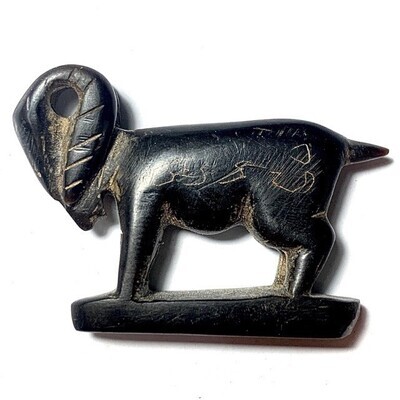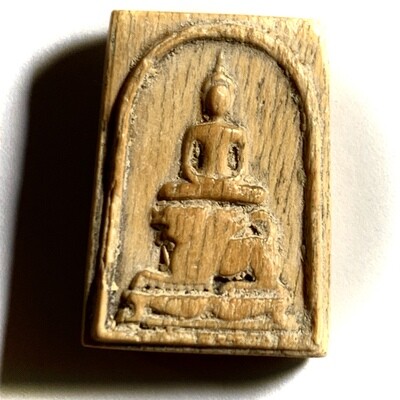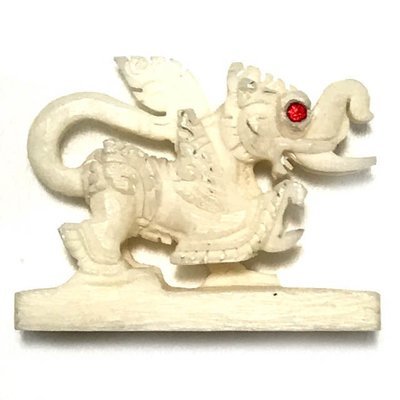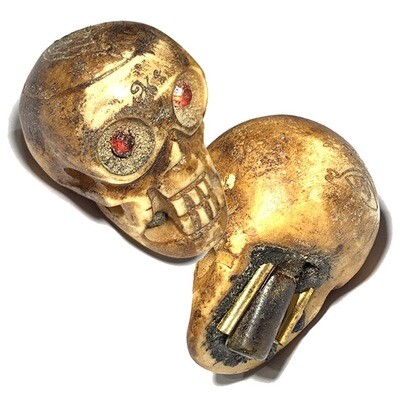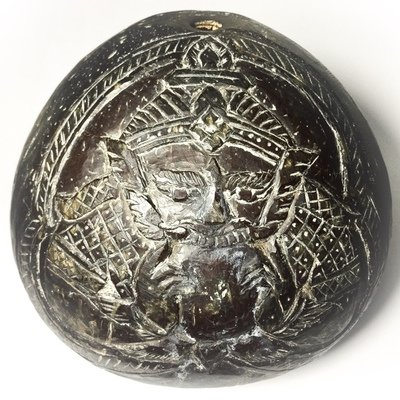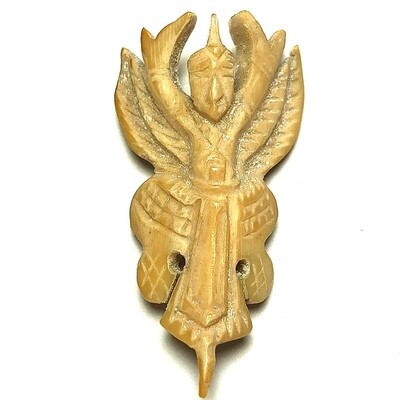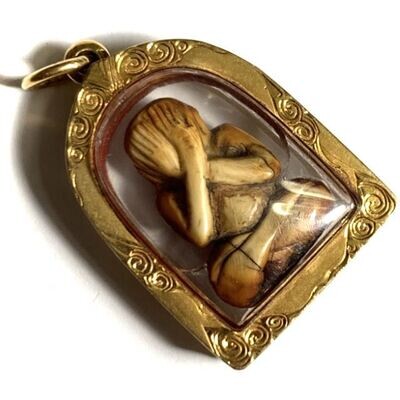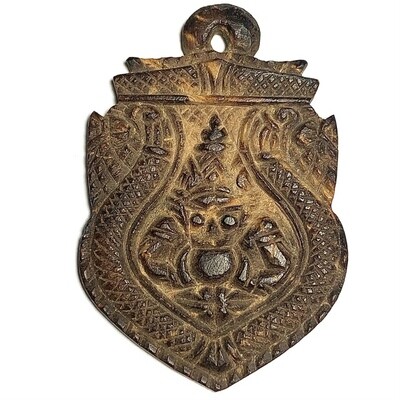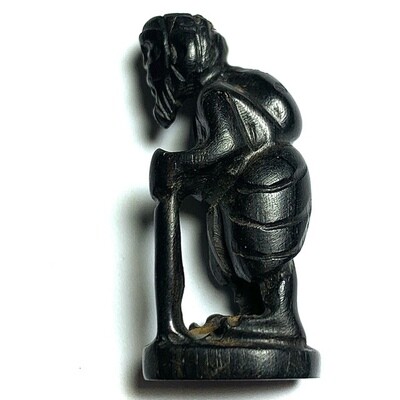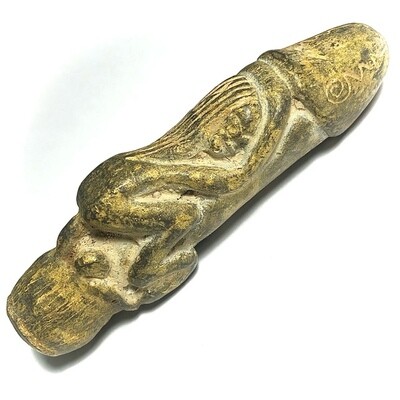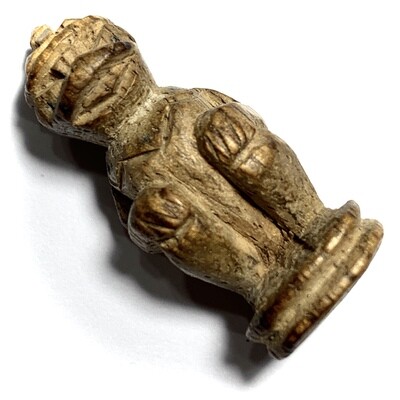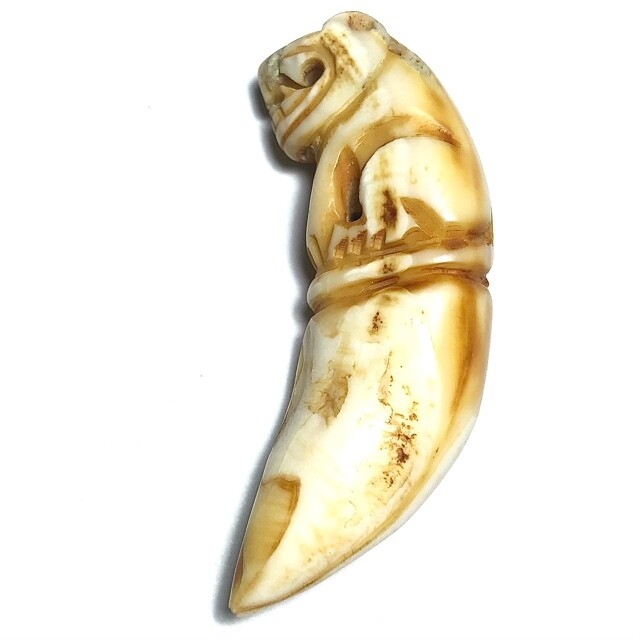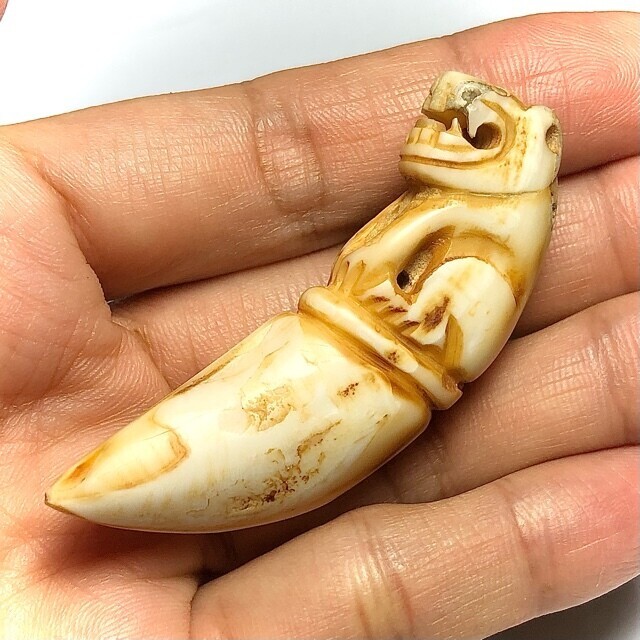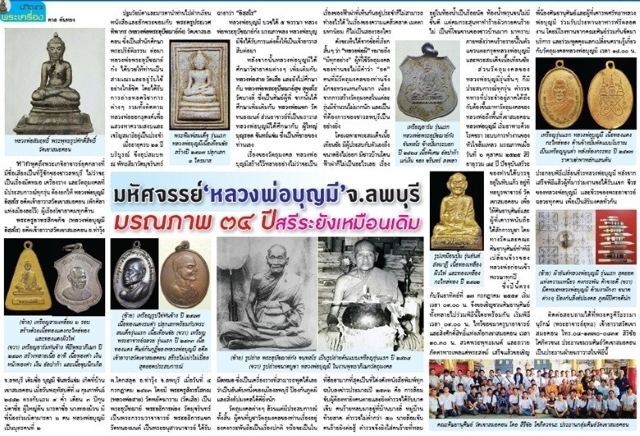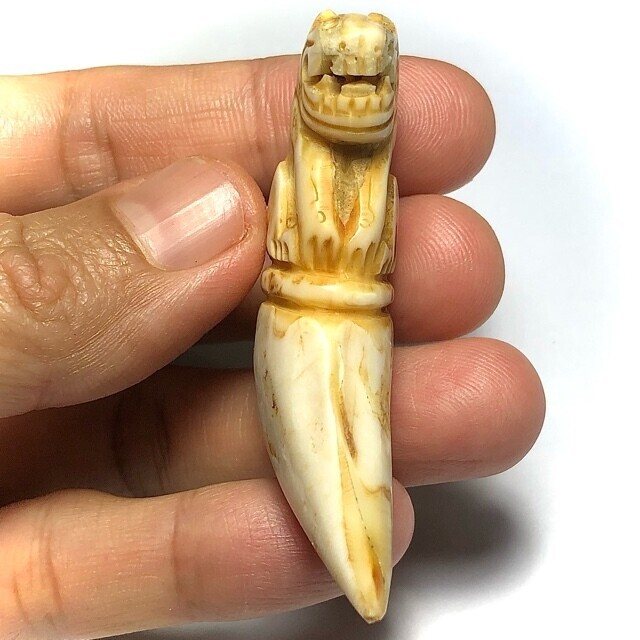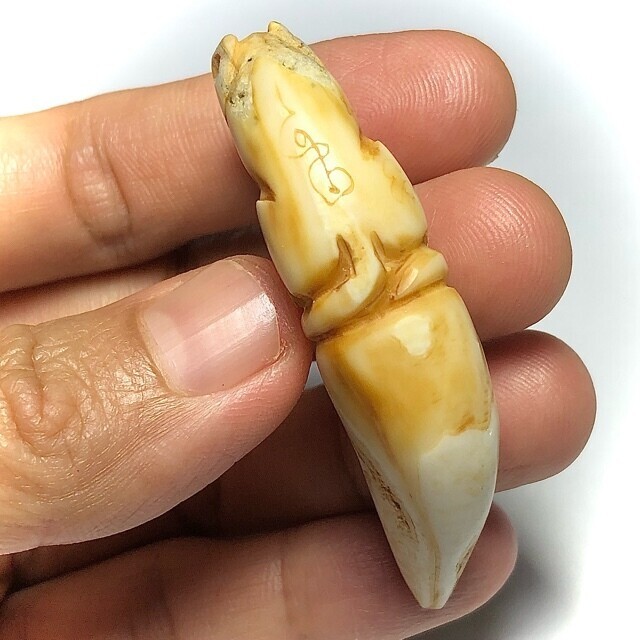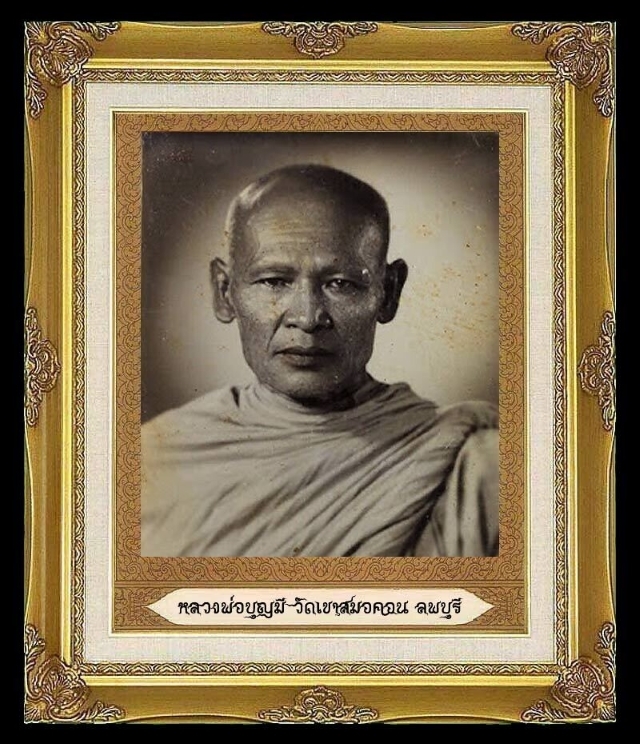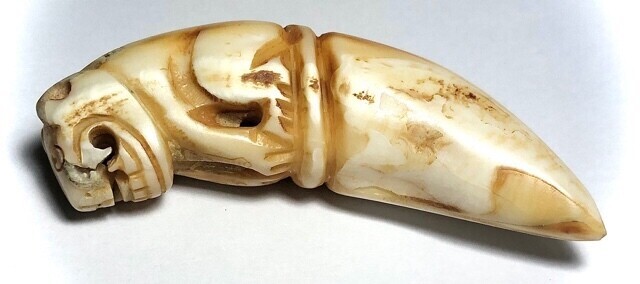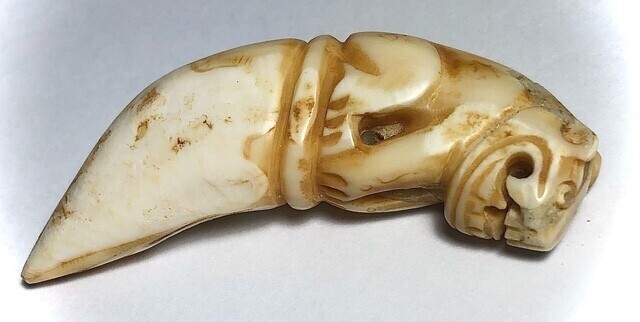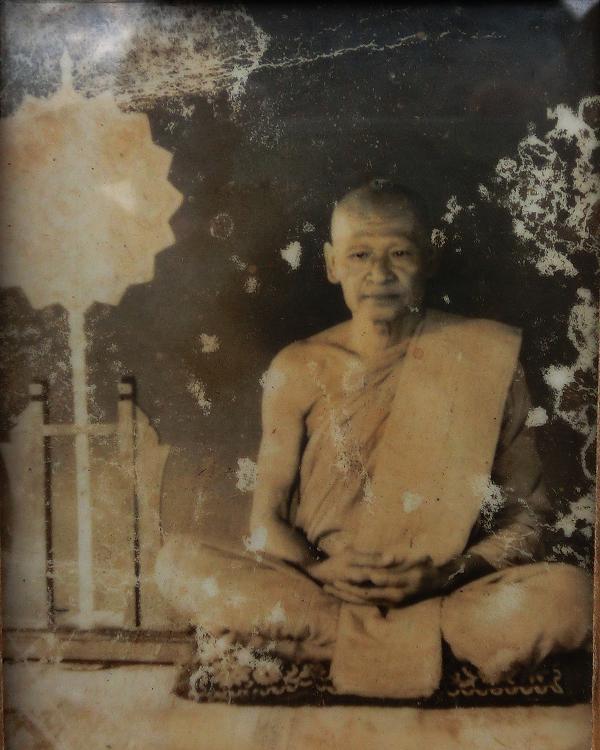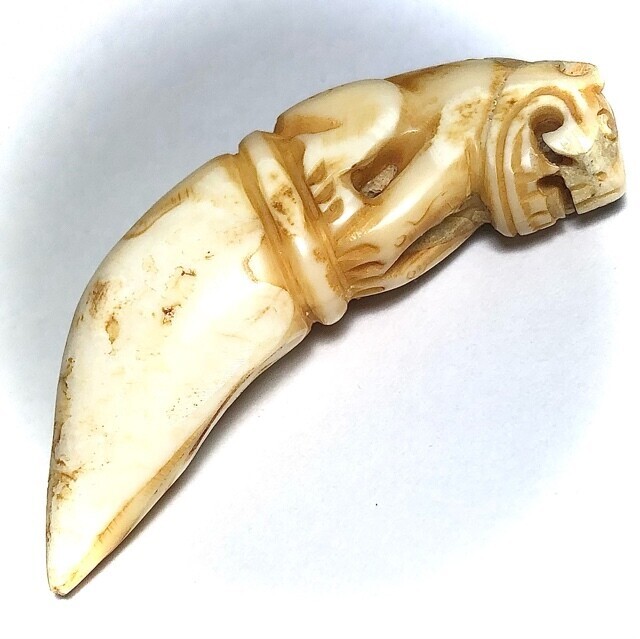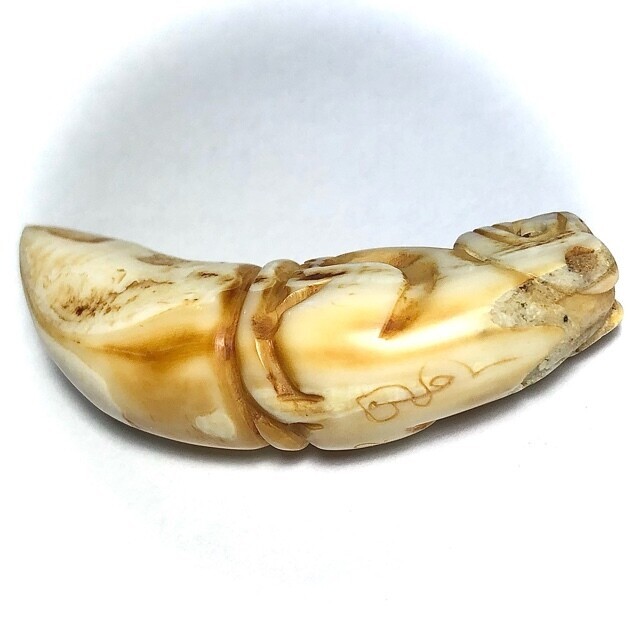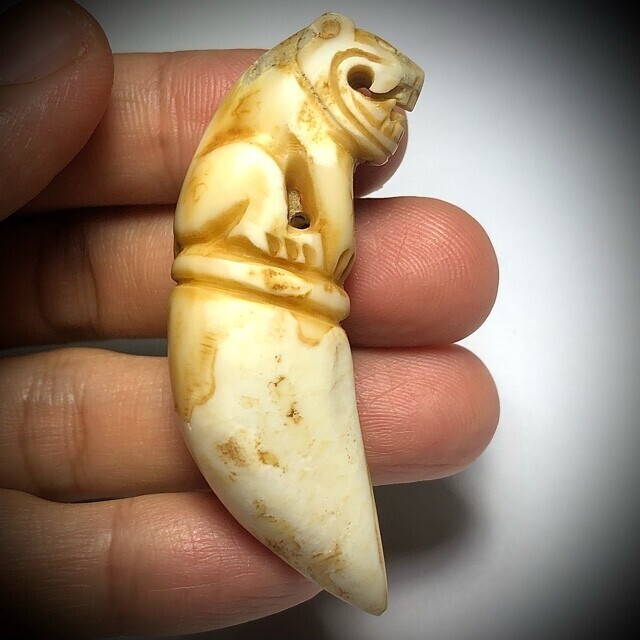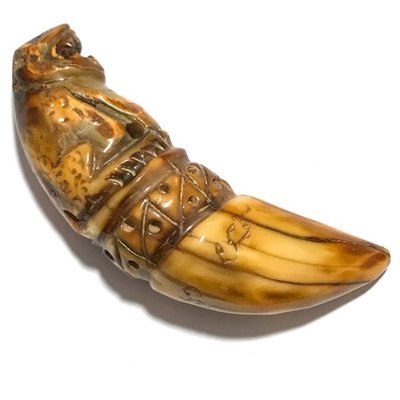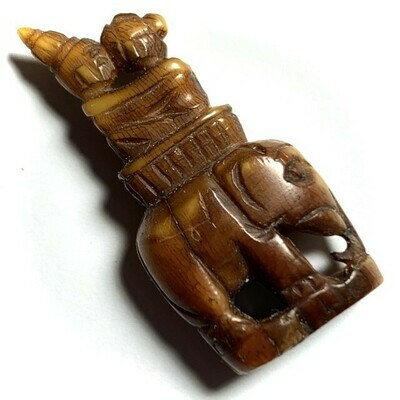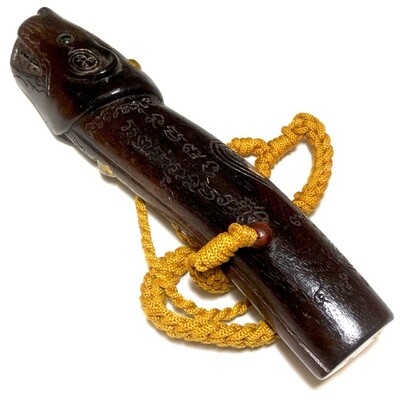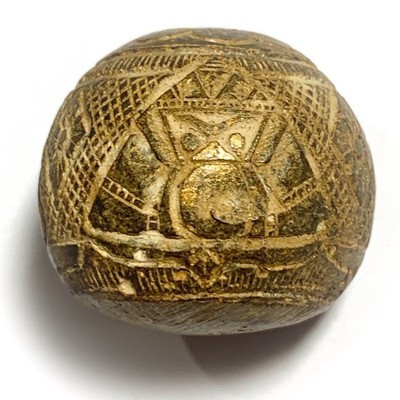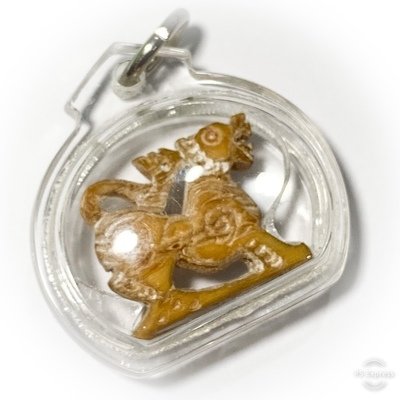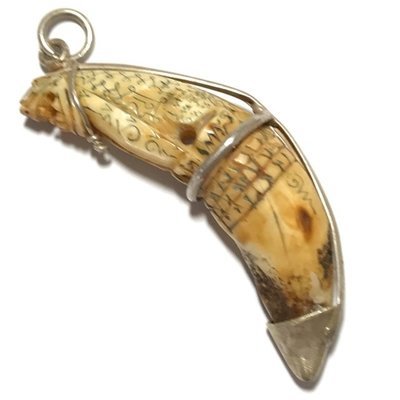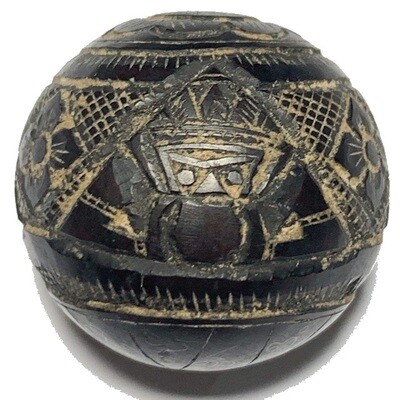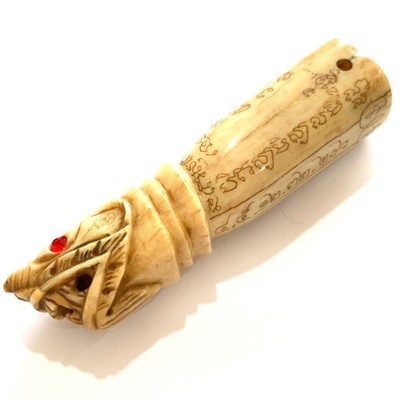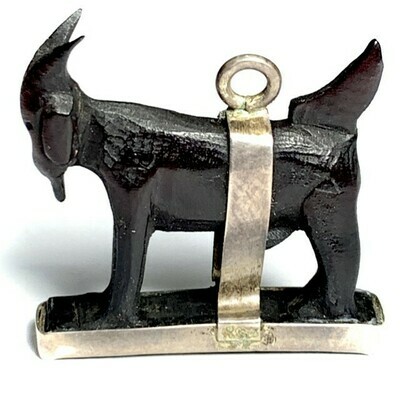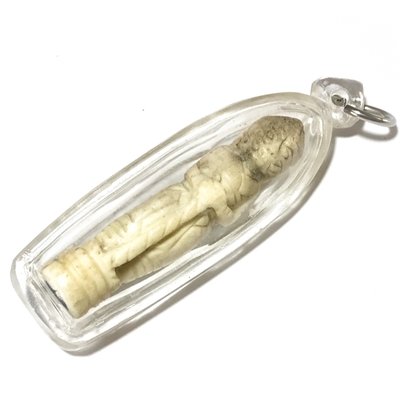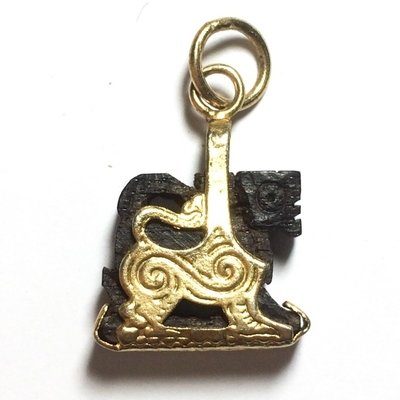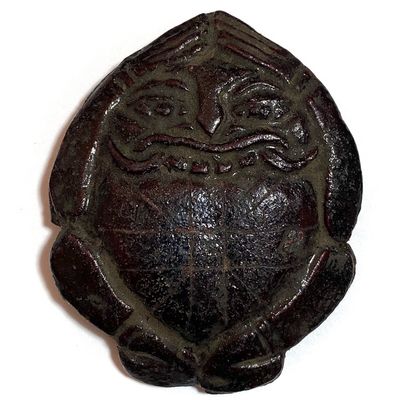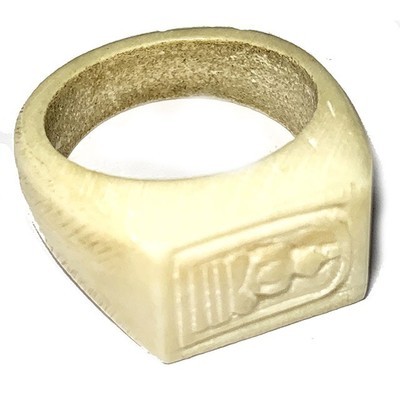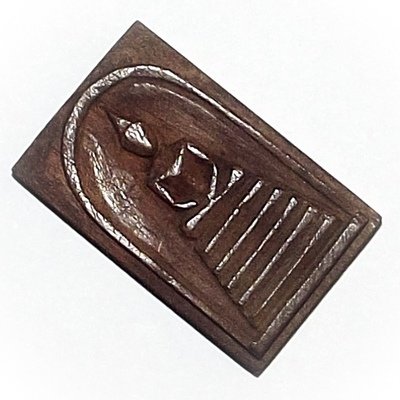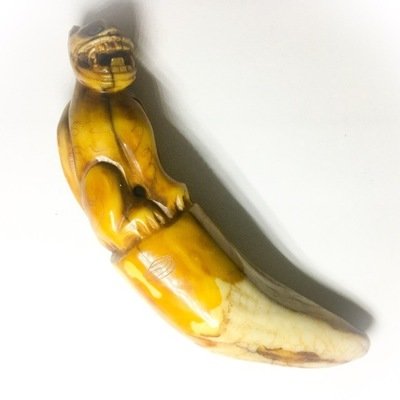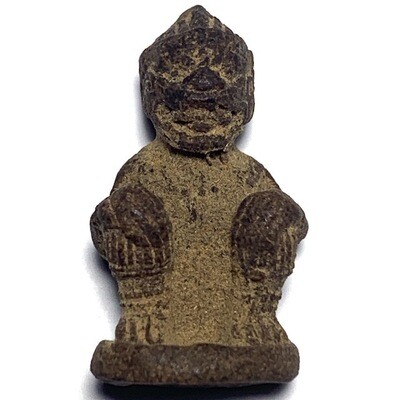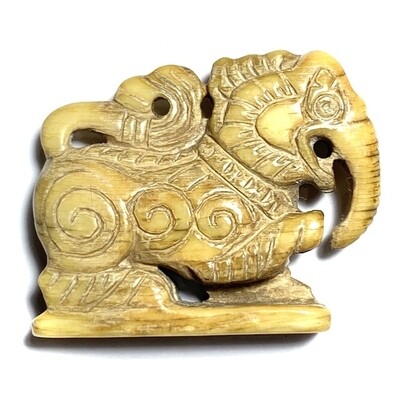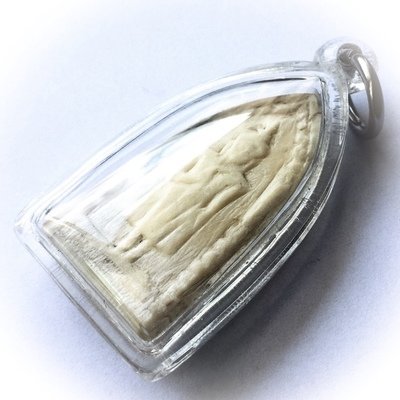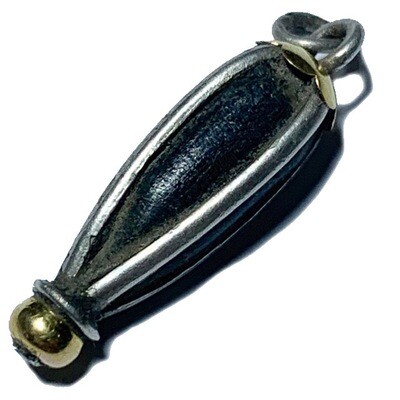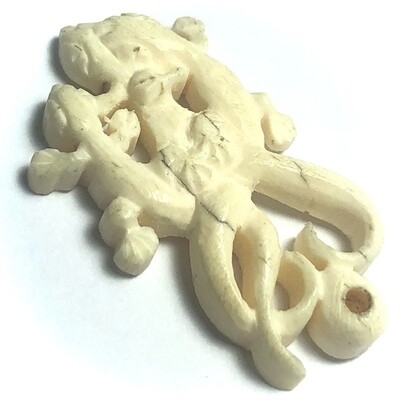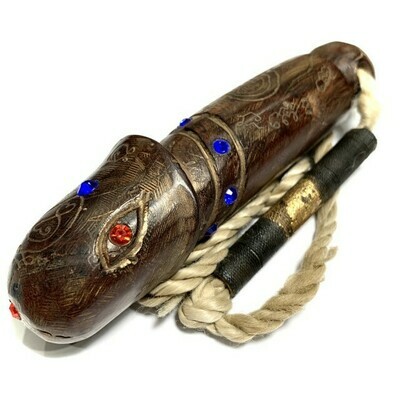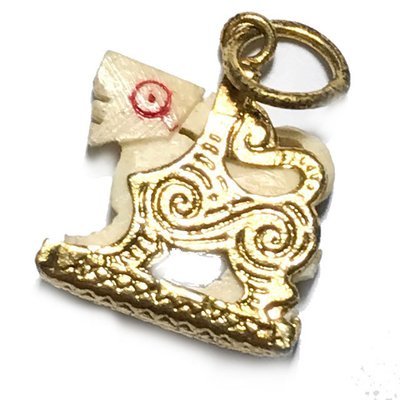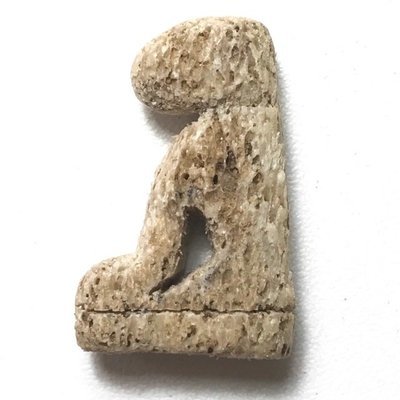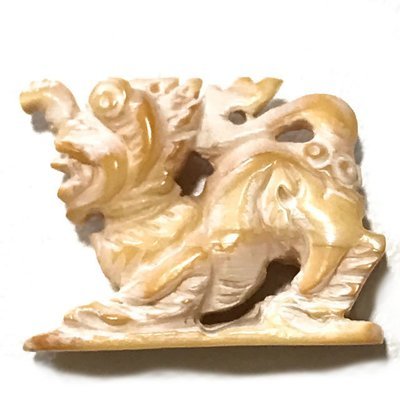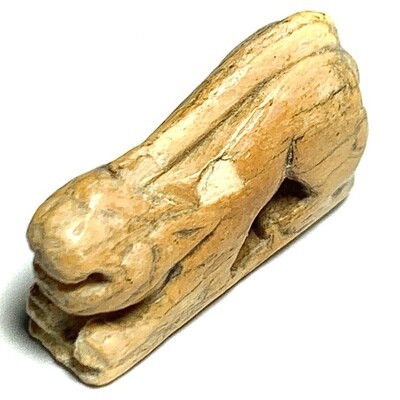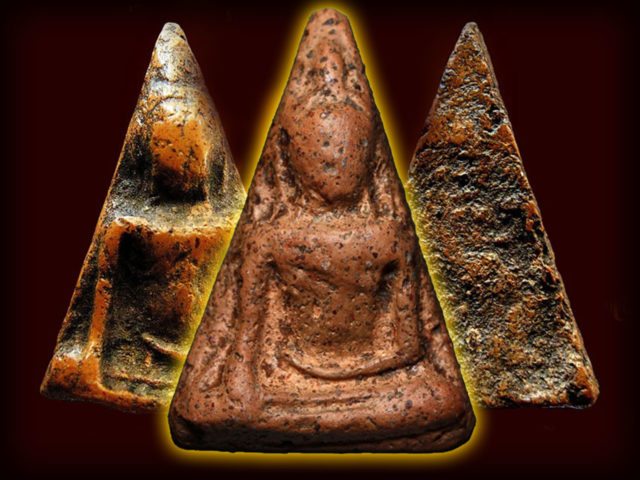
The Legend of Pra Nang Paya Amulet
Pra Nang Paya Benjapakee Amulet
Pra Nang Paya, or ‘Pra Pim Nang Paya, is an amulet from the Ayuttaya Period, which was artistically influenced in its design factors by the Artisans of the Sukhothai Periodic Style. As to the composition of the design of the Pra Nang Paya amulet, it can be said that it contains the work of the Sukhothai Artisan as its heritage, and is a Mark of Preservation of the Eight Periodic Buddhist Art styles found in Thai Sacred Arts and Amulets.
The Pra Nang Paya amulet was first discovered within the Chedi Stupa at Wat Nang Paya in Pitsanuloke, in the year 2444 BE, as King Julalongkorn Rama 5 was visiting Pitsanuloke, to be present for the casting of the Chinarat Replica Buddha at Wat Pra Sri Radtana Sasadaram. The King was invited to come and receive a large number of them as gifts (the best selected), and his Majesty then distributed them to the Government Officials and other Courtiers and Devotees. The remaining amulets, he took back to Bangkok. Apart from the ‘Serm Duang’ Horoscope Improving effects of this Purely Buddhist Amulet, the amulet is Famous for its Metta Mahaniyom, Klaew Klaad, Kong Grapan Chadtri, and Maha Lap powers.
The Pra Nang Paya Benjapakee amulet has 7 different Pim in total.
Pra Nang Paya Pim Khao Koeng.
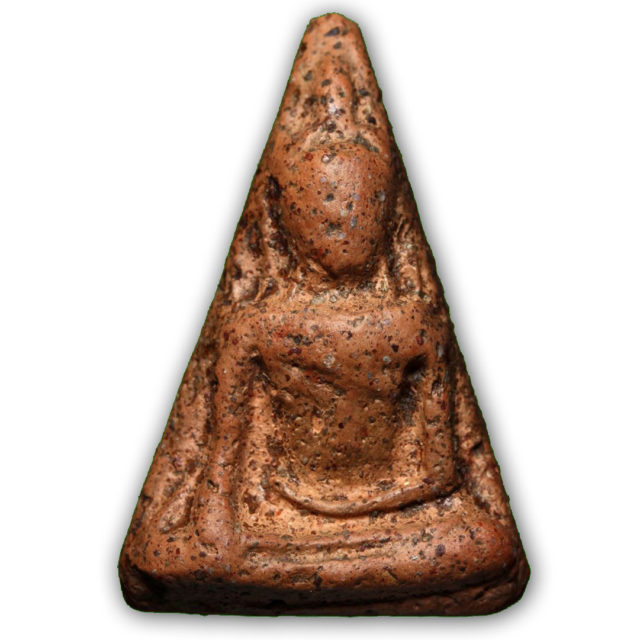
Pra Nang Paya Pitsanuloke Pim Khao Koeng Benjapakee Hiding Place Amulet
Pra Nang Paya Pim Khao Dtrong
(splits into two models; Khao Koeng Tammada, and Khao Koeng Mer Dtok Khaa).
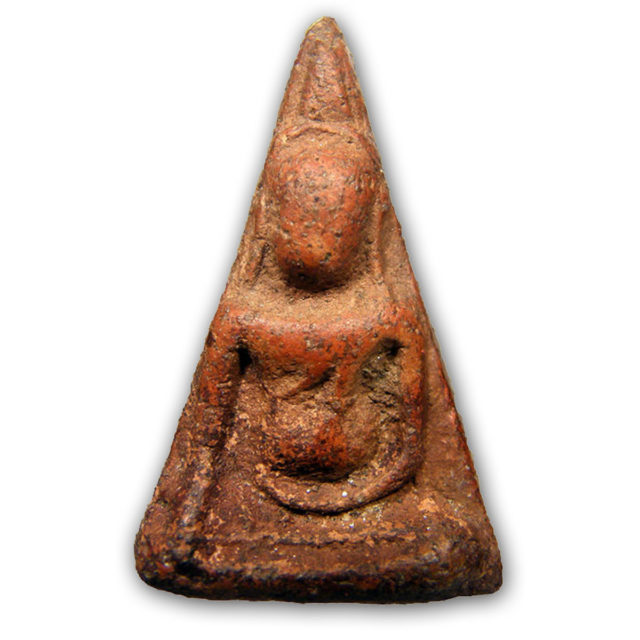
Pra Nang Paya Pitsanuloke Pim Khao Dtrong Benjapakee Amulet
Pra Nang Paya Pim Ok Noon Yai
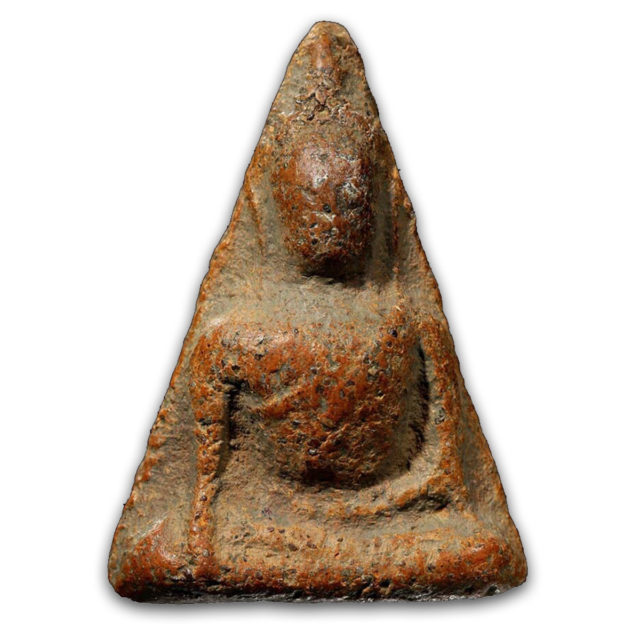
Pra Nang Paya Pim Ok Noon Yai Benjapakee Amulet – a Classic Pra Niyom Master Class Amulet
Pra Nang Paya Pim Ok Noon Lek.
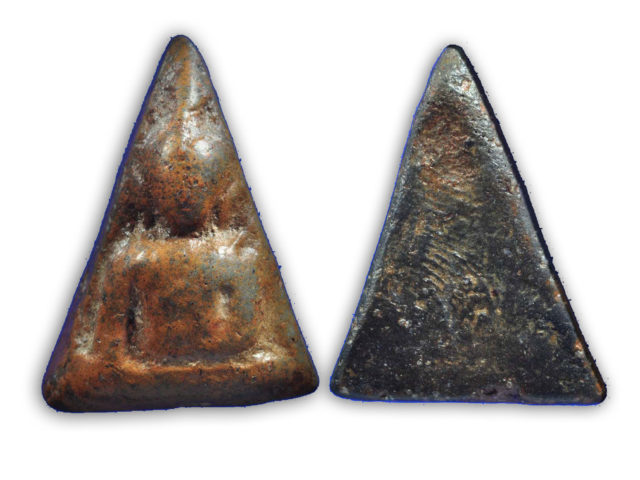
Pra Nang Paya Pitsanuloke Pim Ok Noon Lek Benjapakee Amulet of Historical Fame and Legend
Pra Nang Paya Pim Sangkati.
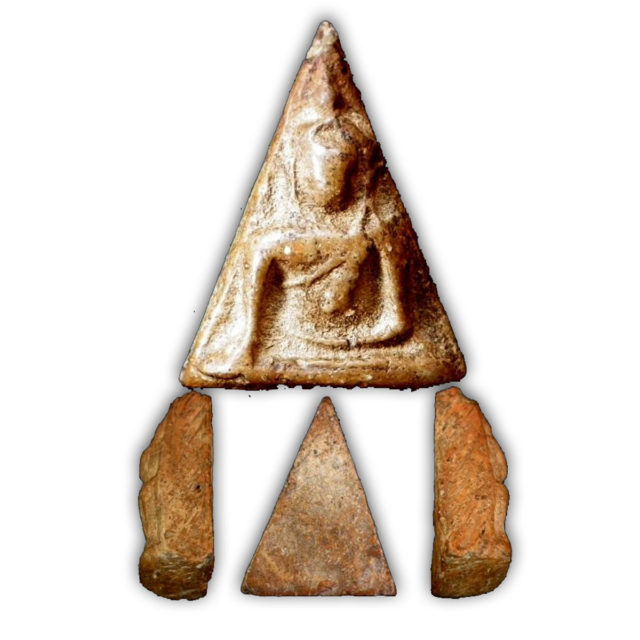
Pra Nang Paya Pitsanuloke Pim Sangkati Benjapakee Amulet – a very rare model to encounter from the seven Pim discovered in the Pitsanuloke Find
Pra Nang Paya Pim Ok Faeb also called ‘Pim Taewada’.
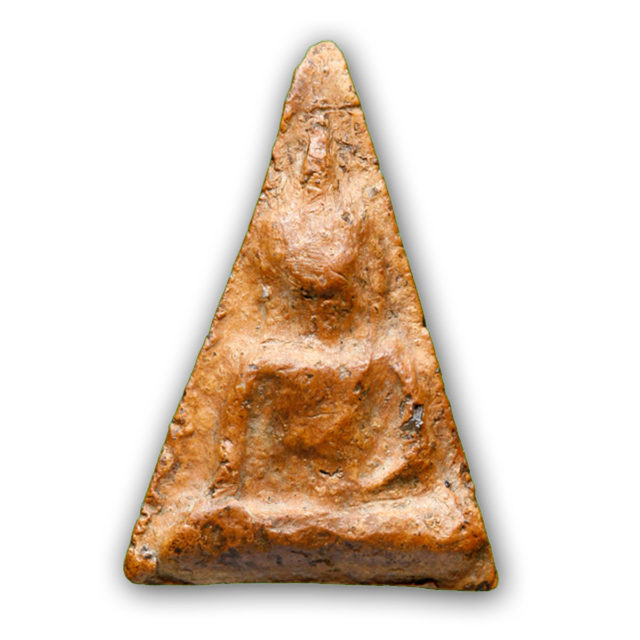
Pra Nang Paya Pim Tewada – a Classic Benjapakee Pra Niyom Master Class Amulet
Pra Nang Paya Pim Pised
(includes various amulets which do not fit in the above categories, such as the Khao Buang, or the Pim Yai Pised).
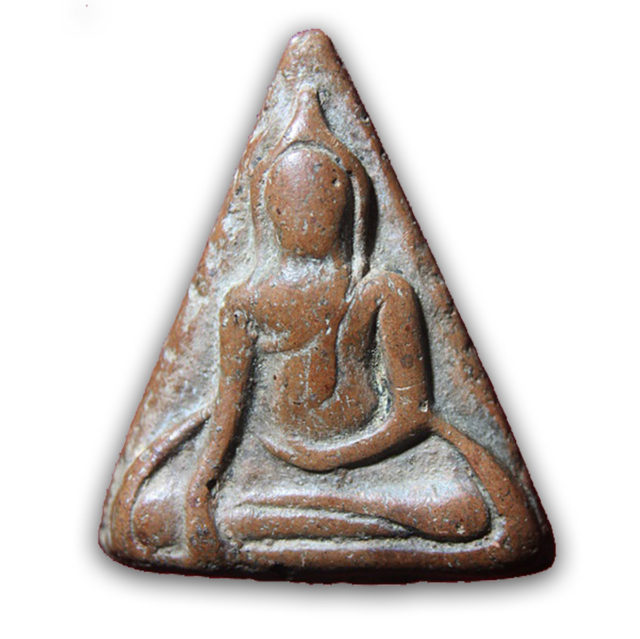
Pra Nang Paya Pim Pised Rare Special Model
Khiaw Gae Suea Maha Amnaj Luang Por Bun Mee Wat Khao Samor Don
Hand Carved Tiger Amulet, carved from Animal Incisor Tooth (probably Suea Maekh Clouded Leopard), from the Great Luang Por Bun Mee Issaro, of Wat Khao Samor Don in Lopburi. The Fang is hand inscribed with the Sacred Yant Na Hua Jai Suea Heart of the Tiger Yantra, and Khom Agkhara Magical Script, with the form of a Tiger carved into the top of the Fang.
Luang Por Bun Mee was a Great Gaeji Ajarn Sorcerer Monk of the became even more highly revered after his passing, than during his lifetime.
This was due to the fact that after over 35 years after his passing, his mortal remains were found to be still unchanged, which is considered a Miracle by Thai Buddhists, when a corpse does not rot without mummification. This fact became so widely spread that it was featured in a full page national news article.
Khiaw Suea are full of Maha Amnaj, Kong Grapan Chadtri and Metta Mahaniyom-Maha Sanaeh Magick, and possess Anti Black Magick Forces in their very nature. An excellent Status Increase Talisman to Impose your Superiority and Status and Rank over others, and to protect you from deadly Dangers and Weaponry, as well as to Increase Seductive Charm and Chances of Promotion.
Luang Por Bun Mee was highly revered by Devotees of the Lopburi Province during his lifetime, renowned for his many amulets and talismanic charms, such as his world famous Mitmor Spirit Knife, Roop Tai Blessed Photos, Takrut Tone, Look Om, Somdej, and his many Guru Monk Coins. Every single edition he ever made, became immensely famous and popular for the many reports of powerful effects received by those who wore his amulets.
The Powers of the Tiger Magic, especially preferred in carved ivory sacred woood, bone, and above all, fangs and Teeth, are reputably said to possess Kong Grapan Chadtri, Klaew Klaad, and Maha Amnaj (commanding power and influence), as well as powerful Maha Sanaeh attraction power and Metta Mahaniyom Mercy Charm.
Kata Pluk Suea
Luang Por Bun Mee was known to be a Master Adept in Wicha Akom Buddhist Sorcery, and especially for his Mitmor Knives and Hand Made Carved amulets. LP Bun Mee was born on the 8th February 2442 BE, in the Year of the Pig, under the name 'Bun Mee Jantr Jaem'. His father was named Poo Yai Dton, and his mother ws named Mrs. Tong Muan. He was the second born of 6 siblings.
As the young Bun Mee was still of early primary school age, his parents sent him to learn Khom Agkhara Sacred Thai-Khmer Sanskrit Script, with Pra Kroo Prawes Tippakorn (Pra Upachaya Luang Por Gong), at Wat Khao Samor Don. Due to the fact that Wat Samor Don was a temple dedicated to the study of the Pariyatti Dhamna Pitaka (227 Rules of Renunciation of a Buddhist Monk/Bhikkhu).
The young Bun Mee, developed an innate and complete understanding of how an Ordained Bhikkhu should behave and practice, and the proper restraint necessary. Luang Por Gong Ordained the young Bun Mee as a Samanera Novice Monk, whilst still a young child.
LP Gong took Luang Por Mee everywhere with him as his first prime apprentice, and shared the knowledge of all of his magical Wicha. He would often take Luang Por Bun Mee on Tudong Forest Wandering, to find solitude and silence, and develop Samadhi Jhana meditation.
When Luang Por Bun Mee reached the age of 21, in the year 2463 BE, LP Gong took the young Samanera Monk Bun Mee to be Ordained as a fully fledged Bhikkhu, at the temple of Wat Mujariin in Lopburi.
His Upachaya Ordaining Officer was Pra Kroo Sangworn (Kuang Por Sope), of Wat Payakkaram (Temple of the Tiger). HIs Pra Gammawajajarn Prompting Officer was Pra Atigarn Phong, of Wat Mujarin, and Pra Atigarn Khaeg, of Wat Nong Mont, was his Pra Anusawanajarn Witness. He was given the full Ordained name of 'Bun Mee Issaro'.
Five years after Luang Por Bun Mee's Ordination as a fully fledged Bhikkhu, his Kroo Ba Ajarn, LP Gong, passed away. Luang Por Bun Mee was then chosen as his first apprentice to become the new Abbot, in the year 2468 BE. hereafter, Luang Por Bun Mee continued to study Wicha Akom withLuang Por Say at the Tiger Temple of Wat Suea, and Pra Upachaya Sukh Sukharo of Wat Bang Lee. After this he traveled to practice Magical Arts with the Great Luang Por Khaeg, of Wat Nong Mont. LP Bun Mee also learned special Wicha from Lay Masters, such as Ajarn Bun Ro Jantr Jaem, who was his own older brother, and a Master Adept in Occult Sorcery.
The amulet has a beautiful ochre tint Patina on the surface from aging through the decades of time that have passed, and through contact with the skin, and is a most pristine exhibit, with full hand inscriptions, and beautifully carved into the shape of a tiger, by the hand of a master artisan.
Hand carved talismanic charms such as this exhibit, are very hard to find from LP Bun Mee, as are his highly regarded Pra Somdej Tian Chai Victory CandleWax amulet, which has many stories of Maha Ud Gunstopper Miracles tp its name, from many devotees throughout the ages to this very day. One of the most famous stories about the power of LP Bun Mee's amulets and his blessings, was around the year 2436 BE, when a most wanted criminal who wore one of LP Bun Mee's Amulets, was chased by the police.
The gangster shot at the police, and injured one, so law enforcement surrounded his home, with about 50 officers, and drilled the house full of holes with hundreds of bullets fired. The room he was in was riddled with bullet holes, but not a single bullet had scratched the skin of the Gangster who wore the amulets of LP Bun Mee. The story became national news and legend after it was found out that the Invincible Gangster had worn a Takrut and the Somdej Tian Chai of LP Bun Mee.
LP Bun Mee's amulets became so famous for their protective power, that many soldiers and police traveled from the southern provinces on the Malaysian border, where they faced much trouble and insurgence and danger, to beseech Luang Por for his amulets. Luang Phu Bun Mee remained abbot of the temple of Wat Khao Don Samor and distributing his magical amulets to devotees up until his passing in the year 2525. He was so highly regarded for his powers, that he was chosen as one of the monks present at the great blessing ceremony of 2506 BE at Wat Prasat, the 3rd largest blessing ceremony in Thai History, along with various other historical blessing ceremonies.
